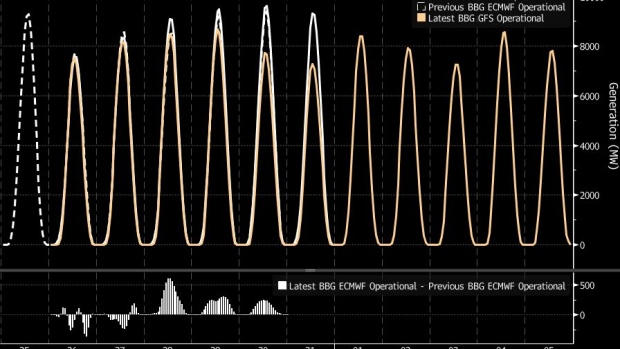May 26, 2020
Green Energy Fed 73% of Electricity in U.K. This Weekend
, Bloomberg News

(Bloomberg) --
The U.K. met almost three-quarters of electricity demand with renewable sources on Saturday afternoon as sunny and breezy weather coincided with low consumption.
Renewable energy from wind, solar and hydro, peaked at 73% of the U.K.’s generation mix, according to Enappsys Ltd. Levels of green power were so high that National Grid Plc had to turn off thousands of megawatts during the weekend to balance the grid.
The grid operator issued three system warnings that it needed to switch off some small wind and solar installations to stabilize the grid. A public holiday this weekend saw demand for power drop, falling to 12,344 megawatts at 5:30 a.m. on Sunday, a modern-day record low for the U.K. system, National Grid data show.
National Grid has been warning about the difficulties of managing the network when demand is about 20% lower than usual due to coronavirus-related restrictions. Last weekend was the first time the network operator has used its so-called optional downward flexibility management service.
It has rolled out new tools for the summer to help reduce supply or increase demand. The extra measures will cost 493 million pounds ($553 million) more than last summer.
Lower demand has meant that a bigger proportion of electricity needs can be met using renewables. The U.K. hasn’t used coal since April 9, a record-long streak. On Saturday, the combination of wind and solar meant the carbon-dioxide intensity of the power system fell to an all-time low of 33 grams a kilowatt-hour, according to data from Drax Electric Insights.
The influx of green power means that wholesale costs are falling. Power for Saturday fell to a record minus 10.13 pounds a megawatt-hour. That’s the first time the day-ahead auction has been negative. Several hours change were traded at negative prices during the weekend.
Most solar generation in Britain and small smaller wind farms are connected to local networks not owned or controlled by National Grid. The system operator has had to put new agreements in place to be able to turn down these generators. Ofgem granted an emergency measure to disconnect these smaller installations if needed on May 7.
National Grid needs some generation like nuclear or gas running to keep turbines spinning and power flowing through the grid at the right frequency. Solar and wind can’t provide the same service and so need to be switched off if there’s not enough demand.
(Updates with information from grid in fourth paragraph)
©2020 Bloomberg L.P.


